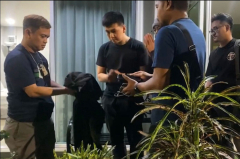It was alarming news when air traffic controllers directing planes coming and going around one of the nation’s busiest airports repeatedly lost their radar and radio communications, but pilots, independent air safety experts and the Federal Aviation Administration say other redundant systems kept planes from colliding.
“I think the risk of a collision or an incident was increased, but not significantly because of the redundancy in the aviation system,” said Jeff Guzzetti, a former accident investigator for the FAA and the National Transportation Safety Board.
Crashes like January’s deadly collision between a passenger jet and an Army helicopter usually have different causes — a combination of many things that go wrong, he says.
Here’s a look at what happened in Newark — and how key pieces of the safety net protected planeloads of people.
The radar and communications systems that a terminal control team in Philadelphia relies on to direct planes in and out of Newark International Airport simultaneously failed twice in the past month for brief periods. The main line that carries the radar signal from another FAA facility in New York failed, and the backup line didn’t work immediately. The system relies in part on aging copper wires and even when there are fiber optic lines, the signal has to be slowed down when it reaches the facility because the FAA computers are so old they can’t handle all the data at full speed.
As a result, the controllers were suddenly unable to see or communicate with planes coming from or going to Newark for as long as 90 seconds on April 28 and May 9. Their radar screens showing each flights in motion suddenly went black. Their radio connections went silent.
The main line failed a third time May 11, but the backup system worked and the radar stayed online. The FAA said a fourth outage Monday knocked out radio communications for two seconds, but the radar stayed online.
After the initial outage, the already shorthanded control center in Philadelphia lost five to seven controllers to trauma leave. Newark’s terminal control team could no longer manage a full schedule of handoffs with the airport’s control tower, leading to hundreds of flight cancellations and delays that rippled across the nation’s airlines. The FAA then imposed safety limits, allowing no more than 28 arrivals and 28 departures every hour. Before, 38 or 39 flights typically took off and landed hourly.
When air traffic control





